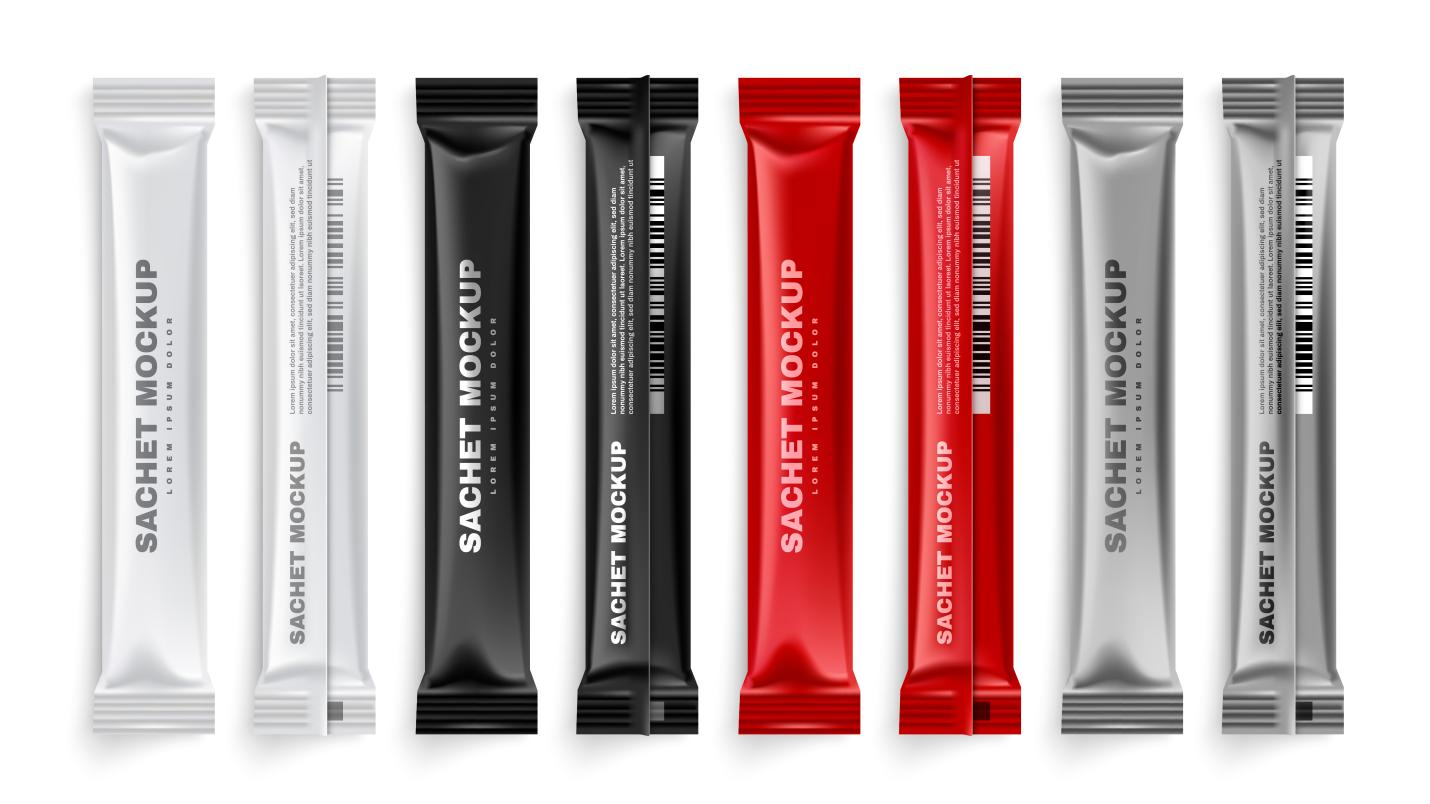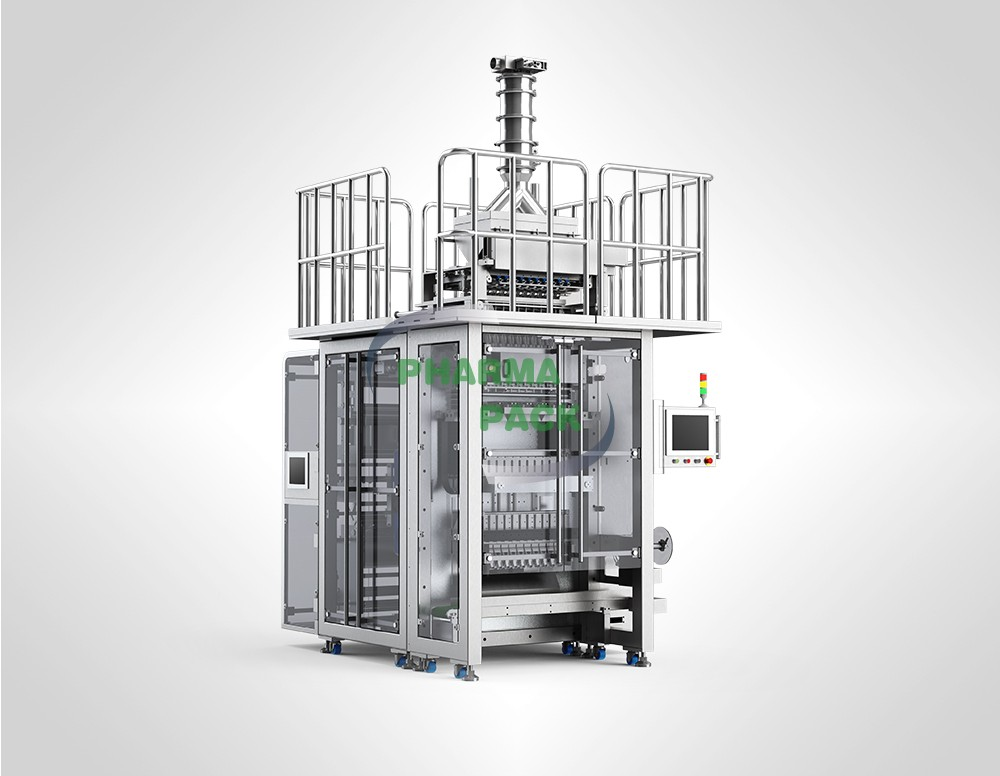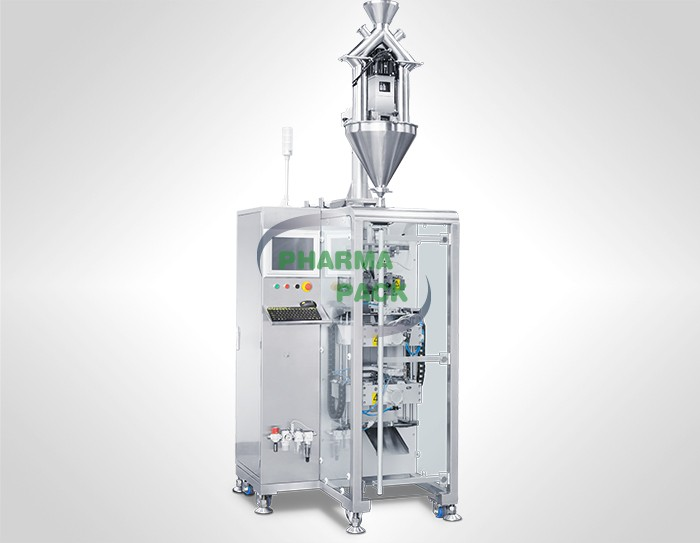

The stick pack machine is packaging equipment to create narrow, tube-shaped packets for single-serve products like powders, granules, or liquids. Fundamentally, they operate by forming, filling, and sealing packs from a flat roll of film.
Their efficiency lies in rapidly processing high volumes while keeping precise portion control, which is vital for industries where dosage and convenience, including pharmaceuticals and food services, dominate.
Also, they can customize pack sizes and materials for brand differentiation and varied packaging needs. It renders them central to up-to-date packaging solutions for serviceable and economic benefits.

(Image from <a href="https://www.freepik.com/free-vector/realistic-sachet-packing-stick-color-set-with-isolated-top-view-images-sugar-sticks-with-text-vector-illustration_37421348.htm#query=stick%20pack%20coffee&position=0&from_view=search&track=ais&uuid=3ae23c27-3fd5-43bb-8c47-f1a4edf5cc00">Image by macrovector</a> on Freepik)
Let's see how a stick pack machine works with a step-by-step overview of the packaging process.
In the film unwinding stage, the machine unrolls the packaging material from a large roll, characteristically a composite film. The material is guided through rollers to uphold tension and preclude wrinkles or misalignments. For example, in a machine packing sugar, a heat-sealable laminate film is unwound to remain smooth and ready for the subsequent stage.
The unwound film is shaped into cylindrical stick packs during the forming stage. It is succeeded using a forming tube, around which the film is wrapped and longitudinally sealed, ordinarily through heat or ultrasonic sealing methods. For instance, in creating coffee stick packs, the machine precisely forms the film around an explicit diameter tube for uniformity in size and shape.
The formed stick packs are filled with the product in this phase. Precision dosing equipment dispenses the exact amount of product into each pack. It might involve auger fillers for powders or piston fillers for liquids. For instance, a machine filling cosmetic powder sticks uses an auger filler to dispense an encoded volume of cosmetic powder into each pack while avoiding overfilling or underfilling.
Following the filling, the open end of each stick pack is sealed to shelter the contents. Sealing might involve applying heat and pressure to fuse the film's layers. For instance, the machine implements a clear-cut temperature and pressure to create an airtight and leak-proof seal in sealing stick packs of olive oil. It helps guarantee the oil's freshness and avert spillage.
The continuous strip of stick packs is cut into individual units. It is done with a sharp blade or laser per the material and precision. The individual stick packs are discharged from the machine onto a conveyor for further processing or packaging. E.g., in producing ketchup stick packs, the machine cuts each pack to an exact length before they are collected for boxing and distribution.
The following are the types of stick pack machines based on their specific functions and features.
Single-lane ones concentrate on high-precision, low to moderate-speed packaging. They utilize a single channel to form, fill, and seal stick packs for small-scale operations or products requiring individualized handling. Their compressed design allows for defined control over the fill volume. It certifies accuracy in packaging smaller quantities of products like pharmaceuticals or single-serve coffee.
At the same time, multi-lane types are for high-volume, efficient packaging, which operates multiple lanes concurrently. They are designed for increased output. Each lane runs self-sufficiently, allowing for the synchronized packaging of different products or variations. Undoubtedly, it becomes helpful in industries like food and beverage, where variety packs or flavors are standard.
Horizontal ones differentiate themselves with their orientation and operation technique. These machines horizontally form, fill, and seal packs. They are handy for handling liquid or semi-liquid products, including sauces and gels. The horizontal orientation curtails the jeopardy of spillage and guarantees a more uniform fill. These machines may feature progressive sealing technologies to preclude leaks and maintain product integrity.
Last but not least, vertical types are the most common and flexible type. They operate by vertically forming, filling, and sealing the packs for numerous products that range from powders to granules to small pieces. Their vertical design aids gravity-assisted filling to enhance efficiency and exactness for free-flowing materials. These machines are employed in industries like condiments, pharmaceuticals, and cosmetics, where meticulousness and adaptability are key.
Fully understanding the importance of efficiency and quality, Pharmapack has developed a variety of stick packaging machines for diverse needs. Please take a look at two of our products below.

It features a 10-row configuration and a maximum production speed of 70 cuts per minute. Moreover, each row accommodates film widths between 49-90mm. With high filling accuracy (≤±5%), this model measures approximately 2400mm (W) × 2750mm (L) × 3700mm (H). Further, it weighs around 3600kg for steadiness and efficiency in handling products like tea, coffee, and medical items.

It has a single-row format and a max speed of 65 cuts/min for film widths from 49-120mm. It stresses precision with a microcomputer-controlled interface and high-precision I-Mark remote control. Meanwhile, it keeps GMP compliance through its stainless steel and aluminum construction. With dimensions of 1850mm (L) × 1100mm (W) × 2800mm (H), it offers a compact yet efficient solution for packaging smaller volumes of products, including health care and food items.
Pharmapack is always driven by technical innovation, offering premium automatic packaging machines for businesses from different industries. Take the stick pack machine as an example. We develop different solutions that utilize various advancements like high-precision I-Mark remote control, servo drive, PID-driven unreeling servo motor, and more. Acquiring nearly 300 patented technologies, we are ready to offer you tailored leading packing solutions. Explore Pharmapack today, and feel free to contact us for more!